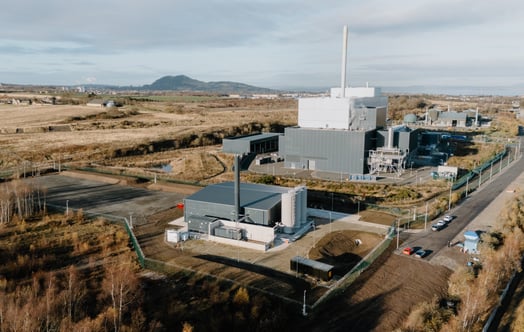At the RWM Exhibition next week, Vattenfall will be leading a discussion on how we have been repurposing waste heat and the key lessons learnt throughout Europe.
Waste heat made headline news with the story that heat from the London Underground will be repurposed to supply heat to the residents of Islington (BBC | Guardian). This is one of a growing number of district heating projects across the country that is making use of ‘waste heat’ to warm our homes, rather than allowing it to be released into the air 'for the birds'.
Waste heat can come from a number of sources, arising as a by-product of industrial or commercial activity (eg transport), or heat that exists naturally in the environment, such as heat extraction from the River Clyde at Queen’s Quay in Glasgow. A BuroHappold report estimates that in London alone, with a heat demand of 66 TWh, there is up to 71 TWh of heat going to waste, straight up into the atmosphere.
The London Underground is just the tipping point when compared to all the other waste heat sources around us that could be efficiently repurposed.
I'm reminded of this when shopping and I get goosebumps walking down the dairy aisle - when on the next aisle the shop is pumping in heat to compensate. Why are they cooling and heating side-by-side? Supermarkets can put doors on their fridges, and cities can stop burning gas to heat homes when there is so much waste heat in ready supply nearby.
One of the most readily available waste heat sources in the United Kingdom comes from ‘Energy from Waste’ (or EfW) plants. These EfWs take rubbish and refuse from a city that cannot go to landfill - burning the waste in order to generate energy. As the UK moves away from landfill, the number of EfW plants is only going to increase, making its potential much larger than people realise.
Missing a trick
Tolvik Consulting shows us just how much heat the UK is wasting compared to Sweden and the rest of Europe. We are generating electricity but leaving the remainder waste heat (literally) for the birds. Clearly, we're missing a trick in the UK, while the savvy Swedes are utilising the entire energy content in the refuse, ensuring that they capitalise on the waste heat available to heat their homes.

Energy export per tonne input (UK Energy from Waste Statistics 2018, Tolvik Consulting)
It is always worth remembering that sustainable development is defined as meeting the needs of this generation without compromising the needs of future generations to meet theirs. Wasting so much heat is surely in conflict with engineering ethics; we cannot continue with this waste of valuable energy. Heat pollution should be given the same degree of consideration and seriousness that we give to fossil fuel emissions from vehicles and is something that can be repurposed for everybody's benefit.
Let's put doors back on the supermarket fridges, and ensure we do not leave waste heat from EfWs for the birds.



